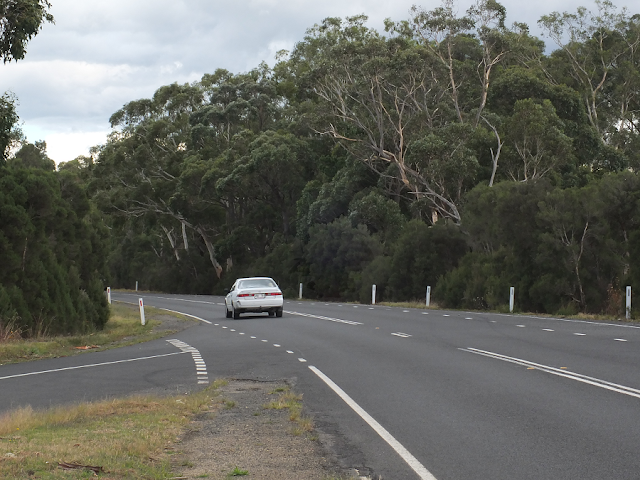Ecologists emphasize that connectivity is vital for the
survival of a species. Good connectivity helps provide maintenance of a healthy
gene pool, development of various means of adaptation and on a global scale, is one way of helping
animals cope with climate change.
Preserving or creating landscape connectivity is recognized
as an important means for maintaining biodiversity. (‘What are wildlife corridors?’ – Aust Govt Dept Environment and Energy)
 |
| Aerial showing roadside and riparian corridors connecting four valuable reserves. |
 |
| Part of roadside vegetation on Old Sale Rd |
Some animals are described as ‘sedentary’ – settled in one
area. Many are ‘locally nomadic’ – move locally to source a food supply or
suitable habitat. Some animals are ‘migratory’ – they follow a regular seasonal
pattern of movement generally for breeding purposes or for the availability of
food.
Some mammals like the Koala and Possum, and a few birds are
defined as sedentary. Many birds are nomadic. Some birds, fish, mammals, even
some insects will migrate, (Wanderer, Crow butterflies). Nomadic and migratory species in particular will often rely
on landscape connectivity for their survival.
At a local level, roadside vegetation and patches of remnant
vegetation along property boundaries, etc, can provide vital pathways for
organisms to move about. (Wildlife
Corridors – Dept Environment and Conservation NSW)
| Foreground - railside vegetation, (albeit weed-ridden). Mid - roadside vegetation in Shillinglaw Rd. Background - Gardner Holman Rd, Settlement Rd, etc. |
Parts of our shire are now declared as peri-urban areas of
Melbourne and are being developed rapidly.
While native
vegetation ‘off-setting’, (properly done), can help, The Friends of Drouin’s Trees believes that,
for the preservation of our wonderful environment and the animals that share it
with us, and for our own health and well-being, it is incumbent of our council
to ensure development is managed sensitively and sustainably and that key
areas of habitat and native vegetation corridors are identified, preserved and
enhanced wherever possible.